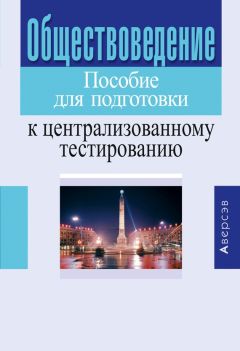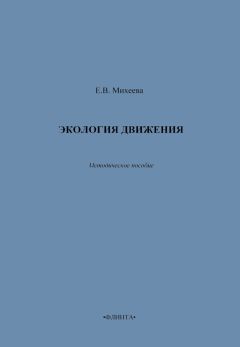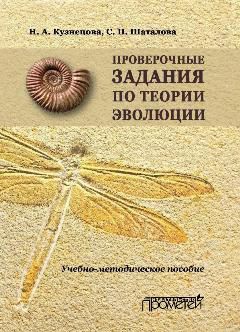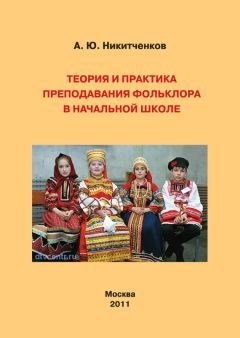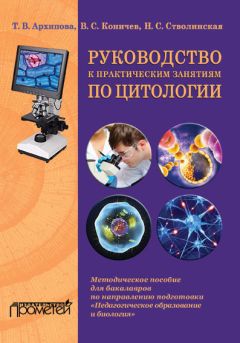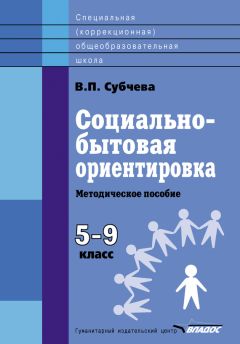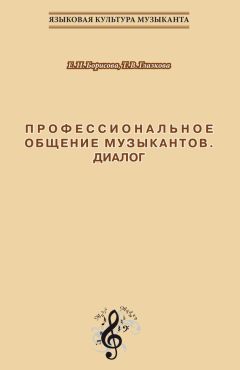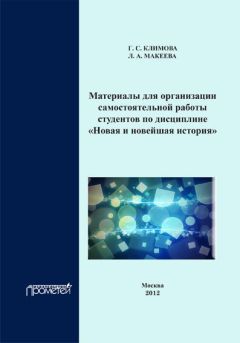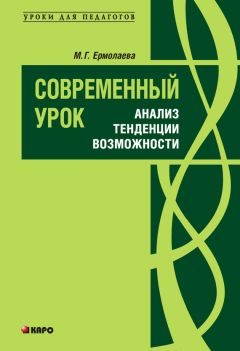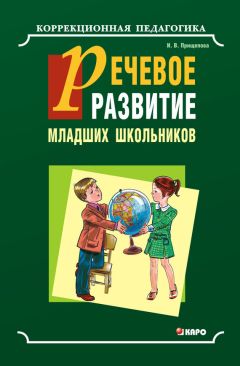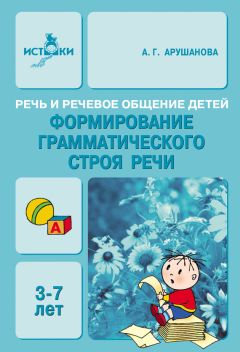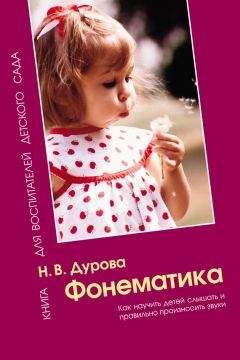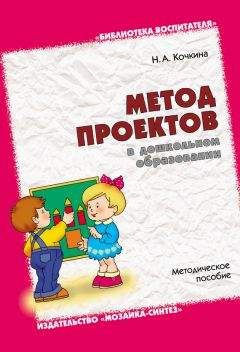З. Мадиева - Английский язык. Учебно-методическое пособие к практическим занятиям для биологов бакалавриата и магистратуры
Скачивание начинается... Если скачивание не началось автоматически, пожалуйста нажмите на эту ссылку.
Жалоба
Напишите нам, и мы в срочном порядке примем меры.
Описание книги "Английский язык. Учебно-методическое пособие к практическим занятиям для биологов бакалавриата и магистратуры"
Описание и краткое содержание "Английский язык. Учебно-методическое пособие к практическим занятиям для биологов бакалавриата и магистратуры" читать бесплатно онлайн.
Предлагаемое пособие предназначается для работы с бакалаврами и магистрами, обучающихся по специальности "биология".
Сборник состоит из адаптированных и оригинальных текстов. Каждый урок включает текст для активной переработки и текст для устного и письменного перевода. Разработан лексико–грамматический материал, серия упражнений к текстам и активный словарь. В конце дан дополнительный материал – оригинальные тексты из английских и американских источников и Интернета для подготовки докладов и написания рефератов. Пособие позволяет приобрести навыки чтения и перевода специальной литературы, усвоить терминологию и развить устную речь.
diversity – разнообразие
husbandry – сельское хозяйство
reed – камыш
diminuation – уменьшение
discharge – выделение
expand – расширять
recession – спад
gain – прибыль, прирост
loss – потеря, ущерб
prevent – предупреждать, мешать
surface – поверхность
shallow – мелкий
extend – простираться
drainage – сток
net – сеть, чистый
Read the international words and give their Russian equivalents:
major, history, effect, million, transport, hydrogeological, engineer, decade, problem, planet, serious, tragedy, national, central, fundamentally, balance, natural, hectar, canal, application, reservoir, filtration, system, result, accelerate, block, separate, western, portion, stabilize, kilometer
THE ARAL SEA PROBLEMThere are two major environmental disasters in the recent history of the former Soviet Union: Chernobyl and the Aral Sea. In 1960 the land-locked Aral Sea was the world's fourth largest lake, but now, due to increased irrigation demands on its two main inflowing rivers, it is now half the size, 16 m lower and three times as salty. The effect on the 3 mln people who needed the lake for its water, fish and transport has been slowly devastating. Sadly, the huge hydrogeological changes which engineers have unwittingly triggered will take decades to reverse. This paper investigates the nature, causes and consequences of the Aral Sea problem and discusses proposed solutions.
One of the planet's most serious environmental and human tragedies is unfolding in the basin of the Aral Sea. Over the past 40 years, the huge lake has shrunk considerably as expanding irrigation has reduced river inflow to it.
The Aral Sea and its Water BalanceThe Aral Sea is located among the deserts of Central Asia. A terminal lake (i.e., without surface inflow ), its level is fundamentally determined by the balance between surface inflow from two large rivers and net evaporation ( i. e. evaporation from its surface minus precipitation on it), which is estimated to be around 874 mm per year. Net ground water exchange plays a secondary role and data on it are approximate.
Five former republics, now independent nations, lie wholly or partially in the sea's basin: Uzbekistan, Kazakstan, Kyrgyzstan, Turkmenistan and Tadzhikistan. The Aral Sea drainage basin encompasses all of Uzbekistan and Tadzhikistan, all but the nothern part of Kyrgyzstan, the eastern half of Turkmenia and the two southern oblasts of Kazakstan. It also includes part of nothern Iran and Afganistan. The flow of the Amu-Dar'ya arises primarily from the Pamir Mountains and the flow of the Syr-Dar'ya primarily from the Tien-Shan Mountains. The population of that part of the Aral Sea basin lying in the former Soviet Union was around 35 mln in 1990.
The Aral Sea was the world's fourth largest lake in the area in 1960. Although somewhat saline the lake was populated mainly by fresh water species and had a productive fishery as well as serving as a major regional transportation route. The vast deltas of Amu-Dar'ya and Syr-Dar'ya not only had major ecological significance, with a diversity of floral and faunal species but great economic importance related to irrigated agriculture and animal husbandry, hunting and trapping, fishing and harvesting of the reeds that grow in abundance in the numerous wetlands and lakes found here.
Over the past 40 years the sea has steadily shrunk. The reason is a huge and growing diminuation of discharge from the Amu-Dar'ya and Syr-Dar'ya, caused primarily by the expanding irrigation in their basins.
Irrigation expantion in the Aral Sea basin after 1960 required much more water per hectar as long canals were extended into the desert; poorer, more saline soils were irrigated, requiring heavier water applications. Giant reservoirs were built that required filling and which increased evaporative losses, and new irrigation systems discharged their water into the deserts rather than back to the rivers.
The net result has been an increasingly large difference between the gain (river inflow) and loss (net evaporation) sides of the sea's water balance. Consequently, the drying, recession and salingation that began in 1960s, accelerated in the 1970s and 1980s and continues into 1990s.
In 1987 the Aral Sea divided into two water bodies: the smaller sea in the north and the larger one in the south. Since then, these have developed as separate water bodies with their own water balances. The Syr-Dar'ya flows into the small sea, whereas the Amu-Dar'ya enters the large sea. A connecting channel existed between the two until mid 1992 when it was blocked by a dike to prevent further water loss from the small to the large sea.
The water body will continue to shrink rapidly because net inflow to it, consisting of surface and subsurface compounds, will remain well below net evaporation. By 2005, when the level falls to 30 m the large sea will separate into a deep western part, which would continue to recede and salinize since it would receive no surface inflow, and a shallow eastern portion which would shrink and salinize less rapidly since it would continue to receive inflow from the Amu-Dar'ya. The eastern part of the large sea would stabilize with an area around 7000 sq km later in the century.
EXERCISES:
1. Translate the following into English:
recede – recession, environment – environmental, serious – seriously, exist – existence – existent – existing, reduce – reduction, fundamental – fundamentally, nature – natural, expand – expansion, extend – extension – extensive – extent, flow – inflow, salty – salt – saline – salinize – salingation- salinity, fish – fishery – fishing, charge – discharge, diminuation – minimum – minimal – minimize, evaporate – evaporation – evaporative, increase – encreasingly, separate – separation, rapid – rapidly, irrigate – irrigation
2. Find in the text the English equivalents for the following words and word-combinations:
огромные гидрогеологические изменения, орошение, требование, впадающие реки, десятилетия, исследовать, последствия, проблема Аральского моря, предложенные решения, пустыни Центральной Азии, уровень, определять, испарение, выпадение осадков, оценивать, второстепенная роль, приблизительные данные, независимые государства, целиком, частично, бассейн Аральского моря, кроме северной части, включать, население, четвертое по величине озеро в мире, рыбный промысел, обширная дельта, разнообразие флоры и фауны, важное экономическое значение, расти в изобилии, многочисленный, за последние 40 лет, пустыня, разделять, с тех пор, насыпь, оставаться.
3. Make questions of the following statements and then give short answers to each of them:
1. The land-locked Aral Sea was the world's fourth largest lake.
2. The Aral Sea is now half the size.
3. The huge lake has shrunk considerably.
4. Expanding irrigation has reduced river inflow to the Aral Sea.
5. The Aral Sea is located among the deserts of Central Asia.
6. Data on net ground water exchange are approximate.
7. Five independent nations lie in the sea's basin.
8. The population of that part of the Aral Sea basin was around 35 mln.
9. The lake was populated mainly by fresh water species.
10. Reeds grow in abundance in the numerous wetlands and lakes.
4. Find in the text the passages to which the questions refer:
1. Why has the Aral Sea shrunk considerably?
2. Where is the Aral Sea located?
3. Why did the drying, recession and salingation of the Aral Sea accelerate in the 1970-1980s?
4. What part of the Aral Sea will stabilize by 2005?
5. Read the following sentences and point out the subject and the predicate in each of them:
1. This paper investigates the nature, causes and consequences of the Aral Sea problem.
2. One of the planet's most serious environmental and human tragedies is unfolding in the basin of the Aral Sea.
3. Expanding irrigation has reduced river inflow to the Aral Sea.
The Aral Sea had a productive fishery and served as a major transportation route.
4. Irrigation expansion in the Aral Sea basin after 1960 required much more water per hectar.
5. The Aral Sea is divided into two water bodies.
UNIT IV
New words and expressions:
degradation – деградация
severe – суровый
cease – прекращать
adapt – приспосабливать
spawn – метать икру
feed – кормить, питаться
hinder – мешать
access – доступ
abandon – оставлять
suffer – страдать, испытывать
damage – повреждать
disaster – бедствие
decline – понижение
pasture – пастбище, подножный корм
affect – действовать, влиять
inedible – несъедобный
vegetation – растительность
graze – пастись
plateau – плато, плоскогорье
implicate – вовлекать
respiratory – дыхательный
digestive – пищеварительный
inhalation – вдыхание
ingestion – глотание
hygienic – гигиенический
drainage – сток
treatment – обработка
pesticide – пестицид
fertilizer – удобрение
contaminate – загрязнять, заражать
morbid – болезненный, патологический
constrained – принужденный
affliction – огорчение
morbidity – патология
Read the international words and give their Russian equivalents:
degradation, commercial, adapt, condition, area, navigation, kilometre, stop, port, major, limit, region, population, million, ecological, zone, serious, delta, reduction, associate, agriculture, practice, system, productivity, natural, vegetation, plateau, respiratory, variety, medical, hygienic, drainage, canal, minimal, critical, problem, pesticide, incedent, factor, diet, general, infant.
Environmental, Economic and Human ConsequencesThe environmental, economic and human degradation from the Aral Sea's desiccation have been wide-ranging and severe. Commercial fishing ceased in the early 1980s as native species, unable to adapt to rapidly changing conditions (chiefly rising salinity and loss of spawning and feeding areas), disappeared and the shoreline receded ten of kilometers from fishing towns and villages, hindering access to the sea by fishing boats. Commercial navigation across the Aral Sea also stopped as efforts to keep the increasingly long navigation channels open to the major port of Aralsk became too costly and difficult and were abandoned.
But damage has not been limited to the sea and settlements directly dependent on it. A region around the sea with a population in 1991 of nearly 4 mln has also suffered great damage and is considered an "ecological disaster zone". One of the most serious consequences has been the degradation of ecosystems in the Amu-Dar'ya and Syr-Dar'ya deltas owing to the huge reduction of flow through them and decline of groundwater levels in them associated with both reduced river discharge and the falling level of the Aral Sea.
Irrigated agriculture, practiced in the deltas of the Amu-Dar'ya and Syr-Dar'ya has been badly hurt by constrained water supplies resulting from greatly reduced river flow. Animal husbandry both in the deltas and in desert regions adjacent to the Aral Sea has been damaged by the diminishing productivity of pastures affected by desertification, dropping groundwater levels and replacement by inedible species of natural vegetation which is suitable for grazing.
Salt and dust blown from the increasingly large former sea bottom is carried as far as 500 km and settles over a considerable area adjacent to the Aral Sea. Natural vegetation and the crops in the Amu-Dar'ya delta to the South of the sea and pastures in the Ust-Yurt plateau to the West of the Aral Sea are suffering the most damage. Blowing salt and dust is also being implicated in increasingly high levels of respiratory illnesses, and even with throat and esophageal cancer.
The population of the area adjacent to the Aral Sea suffers a variety of health problems. Some of these are directly linked to the sea's recession e. g. respiratory and digestive afflictions, possibly even cancer, from inhalation and ingestion of blowing salt and dust, whereas others are results of environmental pollution associated with irrigation and "Third World" medical, health and hygienic conditions. Poor quality drinking water – much of which is taken directly from the Amu-Dar'ya and Syr-Dar'ya whose flow in their lower reaches is largely comprised of irrigation drainage, and from irrigation canals with minimal or no treatment – is a critical problem. Commonly, such water has high salt levels and contains pesticides, defoliants and fertilizers. Contaminated drinking water is implicated in high rates of typhoid, paratyphoid, viral hepatitis and dysentery, the incidents of which grew in the 1970s and 1980s. Because of this and other factors (e. g. high fertility, poor medical care, poor diet and lack of sewage systems) general mortality and morbidity and infant mortality and morbidity are the highest in the region constituting the former USSR.
EXERCISES:
1. State to what part of speech the following words belong according to their suffixes and translate them into Russian:
environmental, economic, degradation, commercial, rapidly, condition, chiefly, salinity, navigation, increasingly, costly, settlement, population, ecological, serious, consequence, reduction, agriculture, husbandry, region, adjacent, productivity, pasture, desertification, replacement, inedible, natural, vegetation, considerable, respiratory, variety, directly, recession, affliction, possibly, inhalation, ingestion, pollution, irrigation, hygienic, quality, largely, drainage, minimal, commonly, factor, general, mortality, morbidity.
2. Find in the text the English equivalents for the following words and word-combinations:
быстро меняющиеся условия, исчезать, ущерб, поселок, зависеть, население, серьезные последствие, животноводство, заболевания дыхательных путей, примыкающий к морю район, загрязнение окружающей среды, орошение, плохое качество питьевой воды, минимальная обработка, вода содержит пестициды и дефолианты, зараженная питьевая вода, плохое питание, высокая рождаемость, общая смертность.
Подписывайтесь на наши страницы в социальных сетях.
Будьте в курсе последних книжных новинок, комментируйте, обсуждайте. Мы ждём Вас!
Похожие книги на "Английский язык. Учебно-методическое пособие к практическим занятиям для биологов бакалавриата и магистратуры"
Книги похожие на "Английский язык. Учебно-методическое пособие к практическим занятиям для биологов бакалавриата и магистратуры" читать онлайн или скачать бесплатно полные версии.
Мы рекомендуем Вам зарегистрироваться либо войти на сайт под своим именем.
Отзывы о "З. Мадиева - Английский язык. Учебно-методическое пособие к практическим занятиям для биологов бакалавриата и магистратуры"
Отзывы читателей о книге "Английский язык. Учебно-методическое пособие к практическим занятиям для биологов бакалавриата и магистратуры", комментарии и мнения людей о произведении.





